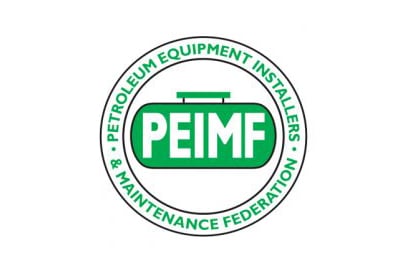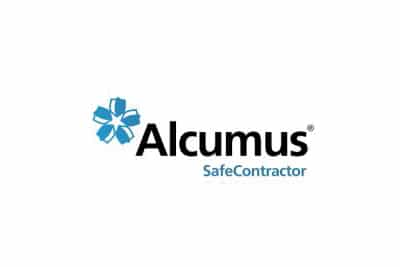Foam Filling Tanks
FOAM FILLING TANKS
Safe Decommissioning In Situ
Foam filling tanks is a method of decommissioning a fuel or oil tank in its current position. When traditional tank cleaning and removal methods may not be feasible, foam filling provides a cost-effective and efficient alternative. This method ensures the tanks are rendered safe, saving both time and inconvenience. However, please note that foam filling may not be suitable when construction work is planned in the immediate vicinity of the tank.
The Benefits of Foam Filling Tanks
Foam filling tanks offers a range of advantages, making it a practical choice for various situations and industries:
- Minimal Disruption: Foam filling allows you to decommission tanks in their current location without the need for extensive excavation or removal. This minimises disruption to your site and surrounding areas, making it an ideal choice for urban environments, densely populated areas, or locations with limited access.
- Cost-Efficiency: Foam filling is often more cost-effective than traditional tank removal methods, as it eliminates the need for transporting and disposing of large tanks. Therefore, cost savings can be significant, especially for businesses on a budget.
- Compliance: To ensure your business is compliant with all statutory regulations, foam filling offers a responsible solution. All tanks are prepared according to industry guidance from the APEA ‘Blue Book’ and all required notifications are completed by our team prior to work taking place.
- Time Savings: Foam filling tanks can be completed in a relatively short timeframe, allowing you to quickly secure your site and move forward with your plans, whether it's repurposing the land or beginning construction.
Foam Filling Tanks - Our Process
The experienced in-house team at JWH Tanks oversees the entire foam filling process, ensuring safety and compliance throughout. Here’s how it works:
Initial Planning
After gathering essential information about your project, we design a safe system of work tailored to your specific requirements. Where required, we notify the petroleum licensing authority of the planned work.
Tank Preparation
We prepare the tanks for the foam filling process according to the APEA ‘Blue Book’, ensuring they are ready to receive the foam safely.
Accredited Foam Providers
Our accredited foam providers arrive on-site under our supervision and dispense the foam directly into the tank. The foam we use ensures that there are no voids left in the tank once it's filled, rendering it safely decommissioned.
Documentation
Upon completion, you will receive a certificate confirming that the tanks are safe in situ, along with a hazardous waste consignment note for any waste removed from the site.
WHY CHOOSE US FOR FOAM FILLING TANKS?
At JWH, we take pride in our extensive experience and commitment to providing efficient, cost-effective and environmentally responsible foam filling tank services to a diverse range of clients.
- Expertise & Experience
- In-House Team
- Safety First
- Cost Efficiency
- On-Time Delivery
- Customer Satisfaction
With over 50 years of industry experience, we have a proven track record of delivering high-quality foam filling services. Our team of experts is well-versed in the latest foam filling techniques and safety protocols.
We handle every aspect of foam filling in-house, from initial consultations to project execution. This ensures seamless communication, quality control and project efficiency throughout the entire process.
Safety is our top priority. We design and implement safe systems of work to protect both our team and your property. Our commitment to safety extends to environmental responsibility, ensuring compliance with all relevant regulations.
Foam filling is known for its cost efficiency compared to traditional tank removal methods. We offer competitive pricing and transparent quotations, allowing you to benefit from cost savings without compromising on quality.
We appreciate the importance of meeting project timelines. Our efficient foam filling process ensures that your tank is safely decommissioned within a reasonable timeframe, keeping your project on schedule.
Our dedication to customer satisfaction has earned us a strong reputation in the industry. We work closely with our clients, addressing their unique needs and concerns to provide tailored solutions that meet their expectations.
When you choose JWH for foam filling tanks, you can trust that your project will be handled with professionalism, expertise and a commitment to safety and environmental responsibility.
Contact us today to discuss your foam filling requirements and experience the benefits of choosing a trusted industry leader.
FAQS: FOAM FILLING TANKS
The choice between concrete and foam filling largely depends on cost considerations. Concrete typically has a far higher cost per cubic metre, but there are no additional fees for delivery. In contrast, foam has a lower cost per cubic metre, but there is a mobilisation cost.
Generally, larger tanks tend to be more cost-effective to foam fill due to the lower cost per cubic metre, while smaller tanks requiring only a few cubic metres may be more economical to concrete fill.
Before filling a tank, several preparatory steps are taken, especially if the tank previously contained petrol. The local licensing authority is informed, and a safe system of work is submitted for approval.
Once approved, our operatives prepare the tank by opening the necessary lids or flanges. The tank is then “bottomed,” which involves inserting a probe to the tank’s bottom to remove any remaining fuel below the suction lines. After bottoming and venting, the tank is ready to be filled, either by gravity-feeding concrete directly into the lid or dispensing foam through a flange.
Finally, a certificate of decommissioning is issued for each tank.
Tanks that have been solid-filled over the years are considered decommissioned. However, it’s essential to be cautious, as historical substandard filling materials can leave tanks potentially unsafe. Concrete or foam may settle unevenly, creating voids containing petrol vapours. These voids pose a risk, as incorrect equipment usage during tank opening can lead to explosions or harm.
We employ safe cold cutting methods to open and vent previously filled tanks, ensuring they are free from potential dangers. Once safely opened, any remaining product inside can be excavated and disposed of properly.
Foam filling is a versatile method suitable for various tank types, including fuel and oil tanks. However, its suitability may depend on specific site conditions and project requirements. Contact us to discuss your needs and determine if foam filling is the right choice for you.
Yes, foam filling is an environmentally responsible method for tank decommissioning. It prevents the release of potentially hazardous substances into the environment, reducing the risk of soil or groundwater contamination.
Yes, foam-filled tanks can be safely excavated and removed if necessary. Our team has the expertise and equipment to handle the removal process while adhering to current regulations.
Foam filling is an excellent choice for tanks in densely populated areas, as it reduces disruptions and minimises the need for extensive excavation. It’s a practical solution for ensuring safety while considering the surrounding environment.
Foam Filled Tank Removal
Ready to explore the benefits of foam filling for your tank decommissioning project? Contact us today for a personalised consultation and a detailed assessment of your needs.
Our experienced team is here to answer your questions and provide expert guidance on your foam filling requirements.
Choose JWH for efficient, cost-effective, and environmentally responsible tank decommissioning solutions.


Nationwide Commercial Tank Services
From Scotland to Cornwall, JWH Tanks delivers top-tier commercial tank services throughout all areas of the UK. Our commitment to nationwide coverage ensures that businesses everywhere can access our expertise. Our coverage includes:
Our Accreditations






